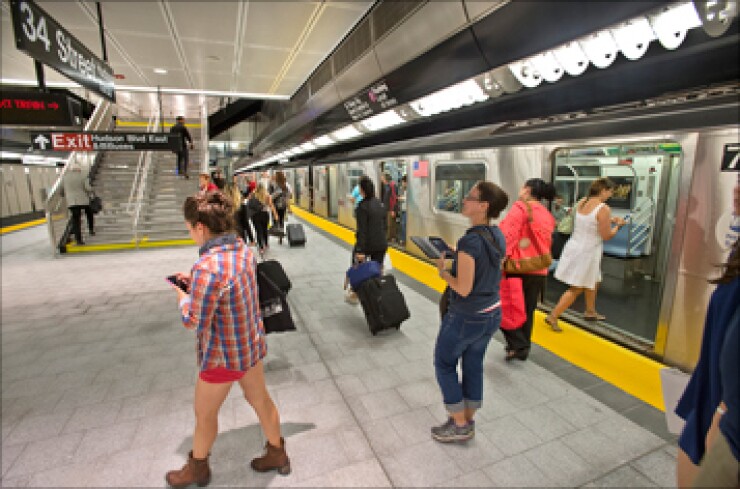The New York Metropolitan Transportation Authority has had a
Fare evasion and lower-than-projected real estate-related tax revenues are creating hundreds of millions of dollars of outyear budget deficits. And when the agency factored in lost revenue from congestion pricing, the budget gaps grew by hundreds of millions more per year.
“The deficit … takes place several years from now,” MTA CEO Janno Lieber said at a press conference after the meeting. “We’re saying, that’s what we’re facing, we identified the causes, and [for] the ones we can control, we’re taking action to address them.”
Lieber added that the MTA has found hundreds of millions of dollars of savings, and hopes to find more efficiencies in the coming years.
The agency will have balanced operating budgets of around $20 billion per year for the next three years, but will run a deficit of $428 million in 2027 and $469 million in 2028.
So far this year, the MTA’s total operating revenues are beating its budget by just over 1%, but the July financial plan suggests the agency has been overestimating several key revenue sources, MTA CFO Kevin Willens said in his presentation to the board.
In the first half of 2024, farebox revenue from the subways and buses was 5% — or $100 million — lower than the MTA’s forecast. Commuter rail farebox revenue exceeded projections by 10%, and toll revenue also beat projections, but they will not make up the gap in coming years.
The source of these gaps is fare evasion, Willens said. If riders were not evading the fares, the gaps would not exist, and the MTA has been working on methods of lowering fare evasion, including harder-to-jump turnstiles, fare discounts, and increased police presence in stations.
“We let people get out of the habit of paying for buses during COVID,” Lieber said, “because we were trying to protect the drivers at the front, and everybody got on at the back door, and nobody paid.”
Next, two sources of tax revenue for the MTA, the mortgage recording tax and urban tax, are underperforming projections thanks to slower-than-expected recovery of the real estate market.
These taxes combined should provide $1.1 billion to the MTA’s operating budget, but they have only brought in $323 million so far this year — less than half of the revenue of the first half of 2023. Both taxes come from the New York City real estate market, which has fared worse than expected post-pandemic, Willens said.
These revenue shortfalls are already pressuring the operating budget, Willens said, but the agency will be able to balance the operating budget for the coming years. Through 2027, the MTA expects cumulative shortfalls of $700 million for bus and fare revenue and $795 million for real estate tax revenue.
These projections assume the rail and toll revenue will continue to overperform, and that the MTA will have $370 million of debt service savings. That second figure is imperiled by the loss of congestion pricing revenue, as the MTA board learned in the meeting’s second presentation, from Deputy CFO Jai Patel.
Revenue from congestion pricing tolls was supposed to provide $15 billion for the MTA’s 2020-2024 capital plan. Since New York Gov. Kathy Hochul put the plan on “indefinite pause,” the
If the congestion pricing pause isn’t lifted, the MTA will have to issue bonds sooner than expected to make up for the missing revenue, which means $300 million of debt service planned for 2030 will begin in 2027.
Employees who would have been working on capital improvements will be reassigned to operational work in 2025 and 2026, and $100 million to $200 million of their salaries will move from the capital budget to the operating budget.
The capital plan would have replaced hundreds of the MTA’s bus fleet. Instead, the operating budget will bear the $50 million to $150 million cost of repairing the old buses each year, the agency projects. Repairs to old commuter railroad locomotives will add $20 million per year, and other repairs to the system will add $90 million per year, starting in 2026.
Finally, the agency will be deprived of congestion pricing’s other benefits. According to projections, enough people would have switched from driving to public transportation to increase ridership by 1.25%; that would have yielded around $70 million per year. The decreased congestion in Manhattan would have meant faster buses, which would have saved $10 million for the agency each year.
Through 2027, the loss of congestion pricing revenue could subtract as much as $1.37 billion from the MTA’s operating budget.
Hochul has said she will find the MTA an alternate source of revenue, and that the congestion pricing pause is temporary. Hochul, her secretary of transportation and the MTA are also facing
